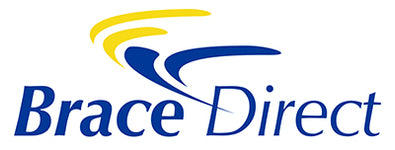
Sprains & Instability: Braces for Ankle Protection & Healing
Ankle sprains happen when ligaments overstretch or tear, usually after a sudden twist or roll of the foot. Chronic instability can follow repeated sprains or ligament weakness, making it risky to walk or exercise without additional support. At Brace Direct, our braces secure the ankle joint, minimize excess motion, and boost confidence so you can heal faster.
Common Causes & Symptoms
Ankle sprains typically occur during sports, uneven ground walking, or any sudden pivot that forces the foot beyond its normal range. Factors include:
- Ligament Laxity: Overstretched ligaments reduce joint stability, increasing the chance of re-injury.
- Weak Musculature: Insufficient ankle and foot strength can leave ligaments vulnerable during quick movements.
- High-Impact Activities: Basketball, soccer, or trail running repeatedly stress ligaments with quick direction changes.
- Previous Sprains: A single sprain may lead to chronic instability if ligaments never fully recover.
Symptoms range from pain and swelling to bruising, instability, or difficulty bearing weight. Proper bracing prevents aggravation and speeds ligament healing.
How Braces Support Sprains & Instability
Targeted ankle braces keep the joint in safer alignment, reducing painful twists. They typically:
- Limit Excess Lateral Motion: Lateral straps, figure-8 designs, or rigid shells secure ligaments against rolling.
- Provide Compression: Mild pressure can reduce swelling and enhance proprioception, warning you to avoid risky positions.
- Offer Stability & Confidence: Feeling supported often encourages a more natural gait, preventing compensation injuries.
- Facilitate Safe Rehab: Braces instill trust in movement, allowing gradual strengthening without overstressing recovering ligaments.
Wearing a supportive brace is key during early healing, high-risk sports, or daily routines if you’re prone to repeated ankle turns.
Recommended Ankle Braces for Sprains & Instability
Check out these top picks to stabilize your ankle, prevent further injury, and encourage confident steps:

Brace Direct Lace-Up Ankle Brace
Figure-8 straps and lace-up design allow customizable compression and support, ideal for sprain recovery or chronic ligament laxity.
Shop Now
Brace Direct Semi-Rigid Active Ankle Brace
A low-profile shell design for strong lateral support, helping prevent ankle rolls without restricting comfortable motion.
Shop Now
Brace Direct Air Cushion Ankle Brace
Air-filled pads and adjustable straps cushion the ankle, delivering supportive alignment and soothing compression for sprains and mild swelling.
Shop NowStabilize Your Ankle & Move with Confidence
Don’t let sprains or chronic instability slow your progress. With the right ankle brace, you can reduce pain, restore balance, and protect your ligaments from further damage. For personalized sizing or product recommendations, explore our Perfect Fit Promise or shop the entire ankle sprains & instability collection below.
Shop Sprains & Instability Braces









